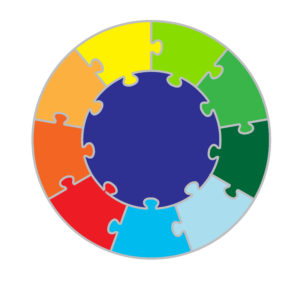The 9 Types of Essays You Meet in the Blogosphere

“Your college compositions will like take one of the following formats, ”Quick Access” authors advise students. The same list of 9 might apply to us business blog content writers, I couldn’t help thinking.
1. Illustration essay – “Just as in a visual illustration, a written illustration shows the reader something or illustrates a point.” Beginning with a startling statistic is certainly one tactic blog writers can use to bring a point to the forefront of readers’ minds, then illustrating that point with specific examples.
2. Narrative essay – A narrative is any type of story, and good ones should contain some dialogue and sensory details. Stories of all kinds – case studies, customer testimonials, famous incidents from the news, Hollywood, folklore – you name it) help personalize your blog post.
3. Descriptive essay – The writer creates a picture for the reader, using close observation. Basic information about your business, material you’ve presented again and again in earlier business blog posts, can assume new power when you relate that content to different sounds, sights, or smells.
4. Process essay – This essay explains how something happened or how something works. There’s no end to the technical information available to consumers on the Internet, but as business blog content writers, we can help readers absorb, buy into, and use that information. How-to blog posts engage readers while establishing business owners and practitioners as knowledgeable in their fields. It might well be that, teaching is the new selling!
5. Definition essay – A word or term is defined by using examples, descriptions, comparisons, or contrasts. Sometimes, in corporate blogging training, I ask writers to make zany comparisons: Online searchers almost certainly lack expert knowledge in your field. That makes it difficult for them to judge if your prices are fair, how experienced you are relative to your peers, and where you “place” in the big “scheme” of products and services.
6. Comparison-contrast essay – The writer explains the similarities and differences between two things. Compare-and-contrast is one of several structures we blog writers can use to help customers and prospects derive the greatest use out of the information we’re presenting. Use what they know, comparing your ”new” solution to traditional “old” solutions to the problem your company solves. Compare unfamiliar things to things with which readers are already comfortable.
7. Classification essay – The writer puts things into groups of related objects, with the purpose being to break down larger groups of things into smaller components. Collecting information from different sources and organizing that information so that it is more understandable to our readers plays a big part in creating value through a blog.
8. Cause and effect essay – A cause is the reason why something happens – the effect is the result of that cause. Consumers reading a blog post are not trained in whatever the company’s specialty is, and could understandably misunderstand the significance of the data presented, and the advice and the intent behind it. Clarifying the best way to address certain problems is one important function of business blogs.
9. Persuasive essay – The writer is trying to convince the reader that his or her own opinion is valid. In blogs, you want to be perceived as a Subject Matter Expert offering usable information and insights rather than as a salesperson. The blog content itself constitutes a persuasive Call to Action!
Are you using all the 9 essays as you create content for the blogosphere?

Leave a Reply
Want to join the discussion?Feel free to contribute!